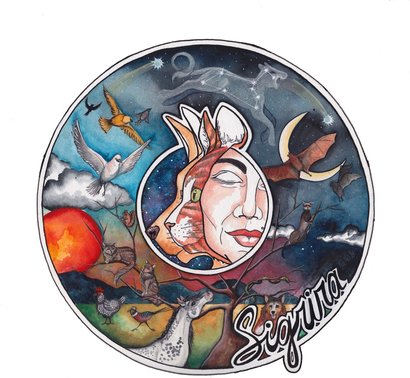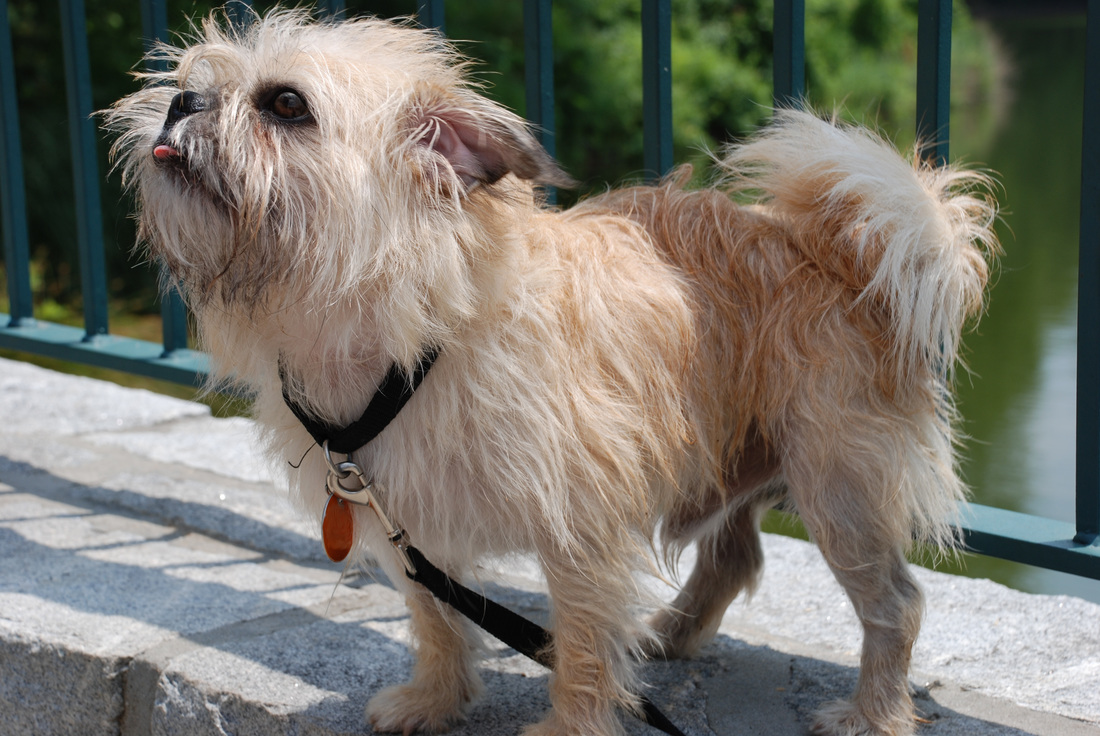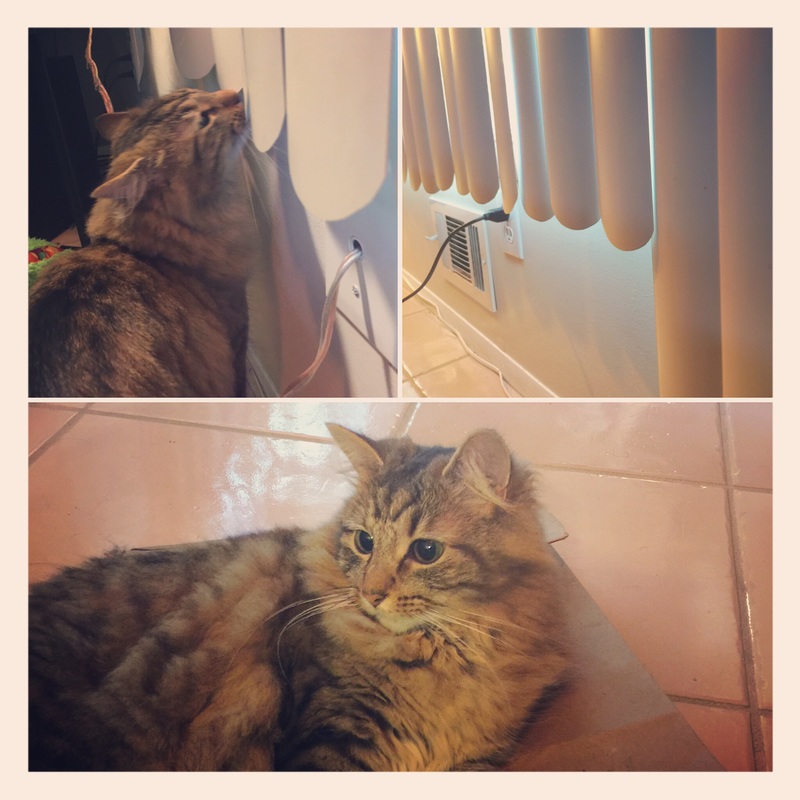|
Animals are all sensitive, as we are, to energy, to emotions and to their environment. I’m writing this to discuss animals that are extra sensitive, and how we can help them be more comfortable.
Environment There are many things that can stress out extra sensitive animals in their environment, for example, fireworks frighten many dogs. My cat son Merlin is disturbed by the sound of metal when I put away silverware from the dishwasher and he is also bothered by the sound of our sodastream when we make seltzer water. On the other hand, he sleeps peacefully through the vacuum cleaner while his sister will nervously pace when she hears vacuuming in another room. While internet videos promote laughing at a cat jumping fearfully from a cucumber, I believe that it is our responsibility as their parents/guardians to never do anything to intentionally frighten them, even if on the surface it seems funny and harmless. It is their home too and by adopting an animal we are pledging to care for and protect them their entire lives. This includes protecting them from unnecessary stress, even inside the home. Each animal is unique and it is impossible to predict what may be a trigger for them. When we notice that something is scary or stressful for them, we must imagine ourselves in their position and do our best to minimize the impact of that stressor. If you have a rescued animal, there may be something in their past that caused the fear. Often loud noises may simply be painful to highly sensitive ears. With a newly adopted companion animal it is best to carefully observe them and their reactions to the home environment. Also when there are changes, even positive ones, like a new family member moving in or a child born into the family, these can be stressful. It is always good to reassure the fur-children that they are equally important members of the family and while there may be period of time when sleep deprived new parents can’t play as much, they are not being “replaced.” Emotions Some animals are emotionally extra sensitive. You can tell that certain things that may be fine for others cause deep emotional distress for these fur kids. When we had to take Juneau and Jarvis for routine visits to the vet, Jarvis would recover from the stress quickly, while Juneau sometimes took days to feel like himself again. Like with the environmental stressors, the more attuned you can be to your companion, the better you are able to help. Some things may be unavoidable, like vet visits, but maybe there is a vet that does home visits in your area? If it truly causes your fur child deep distress it is a great solution, one we have used ourselves for a while now. Otherwise there is a lot of literature online about steps you can take to help calm them before, during and after visits. Some animals are emotionally traumatized if they are yelled at or scolded. Same as with humans, think about the impact your words may have. Always be gentle. If you have an emotionally sensitive animal you are most likely already aware. If you are very bonded it is evident in their eyes, or they may be extra skittish, which will be evident in their body language. Again, be careful when raising your voice as you do not want them to become afraid of you. It is more about the tone than the actual loudness. Some of the extra sensitive animals have not had a lot of previous incarnations on earth and regular things may seem frightening and new. If you were chosen to be their caretaker/parent that is very special and the best way to honor this privilege is by protecting them both emotionally and physically. Energy Animals are often more sensitive to energy than humans. They sense the energy that is behind the words we say, and it is more important than the actual words. They are attuned to their people’s energy, which is why they can tell when we are happy or console us when we are upset. Animals also sense healing energy, such as Reiki for example, and know whether they want/need it or not. They can be more aware of spirit also. As with the physical and emotionally sensitivities, we can help them energetically too. If there is energy in the home that is disturbing your animal (even if you are blissfully unaware) it may be beneficial to clear the space by using sage, intention, crystals or anything else you feel comfortable with. When we lived in a condo apparently there was some energy coming from downstairs that Jarvis was sensitive to, and I was given advice to sage very close to the floor. (Previously I did it kind of higher up the way you normally see on tv.) This also made sense because animals tend to spend a lot of their time closer to the ground than we do, so they would be more affected by anything close to it. Sometimes it is a lovely energy that your animals sense, such as that of a family member (human or animal) that is in spirit, and this is fine as long as they are happy and not stressed by it. My mom’s parrot regularly sees the spirit of her former playmate Perry, a wonderful Shih Tzu who is in spirit now. She says his name every time she sees him. As with all the other examples, if you tune in to your animal’s emotional state it helps to determine if they are happy or if they need your help to feel more comfortable. *Photo Disclaimer:I photographed this sweet looking pup at Piedmont Park a while back-I have not done a session with him-I don't know if he is extra sensitive, he just has a great expression which I feel suits this post. This past weekend I decided to trim our blinds because the computer power cords always create gaps that make them hard to close, and my husband's (and my) first concern was whether they could be trimmed so they would not have any sharp edges which could hurt our cat kids. The photo above shows my solution, (and Gracie Belle helping me,) I cut the edges in a rounded fashion, making sure to smooth out any rough bits. This was especially important because as you can see in the image they are now near eye level for Gracie Belle and Merlin.
I think most of us think about (human) baby and toddler proofing our homes, but we don't always consider that fur babies can also get into things that may harm them. Some of the things we have done include the standard cabinet baby proofing latches for under the sinks where we keep cleaning supplies. A lot of cats are inexplicably drawn to bleach and will try to lick it if they can reach it. For dogs it is important to also keep foods that are toxic to them, like chocolate out of reach. Our animal companions are unique and there are so many different types of homes, but a lot of store bought options for human babies & toddlers will work. In our case, we have a tile floor and stairs, so we bought sticky strips with cushion-y material to prevent the kittens from racing into a hard edge. Sometimes when they are playing & chasing each other they don't watch where they are going and run into the stairs. I feel a lot better knowing they won't seriously get hurt if they do. We also looked for the tallest almost-shag rug we could find to create a soft play area in the living room. So when they leap after toys they are not landing on hard tile. It can take a toll on your companions' joints when they are repeatedly jumping unto hard surfaces. Since our kitties also like to be on the kitchen counter, a simple solution for us was to turn one of the dining chairs sideways so they can use it as a "step" down and make two small jumps instead of a big one. When fur-baby proofing your home, try to consider everything from your animal companion's point of view, sometimes literally. How tall are they? Are there things at eye level that could scratch their eyes? Are any plants in reach? ASPCA has lists online of all the plants that may be toxic to animals. I've had to change my houseplants, and have learned to be creative with macrame hangers. Since plants are so beneficial for clean air in the home I do keep a lot of them, but make sure they are "safe" or otherwise out of reach. Not all animals chew on plants, so it really takes close observation to know what your fur baby will do. On the topic of chewing-consider wrapping/hiding electric cords too, at least during teething phases. This part should go without saying, but please, please never use any poisons aimed at killing rodents in your home. First of all these are terribly cruel to the creatures they aim to harm, and of course they may kill your companion if they get into it, or someone else's, like your neighbor's dog or cat, if they hunt the mouse or rat that has eaten it. This happened to my first dog when I was a child, and I feel a strong responsibility to warn everyone about this danger. When fur-baby proofing also remember to include your yard if you have one. Again, consider eye-level and also what your dog can reach or crawl under. Check for sharp or unfinished parts on your deck and make sure the wood is not splintered so it doesn't hurt their paws. Consider the plants in your garden & make sure they are safe to eat if your dog enjoys an occasional leafy snack. Once you have carefully fur-baby proofed, it is a great feeling to know your animal companion is as safe as possible in your shared home. As they age or as new companions join your family it may be necessary to adapt and add new solutions. It takes a bit of time & creativity to do this, but as I like to say, it's their home too! |
Archives
January 2021
|
|
|
©2013-2025 Sigrira, LLC,



 RSS Feed
RSS Feed